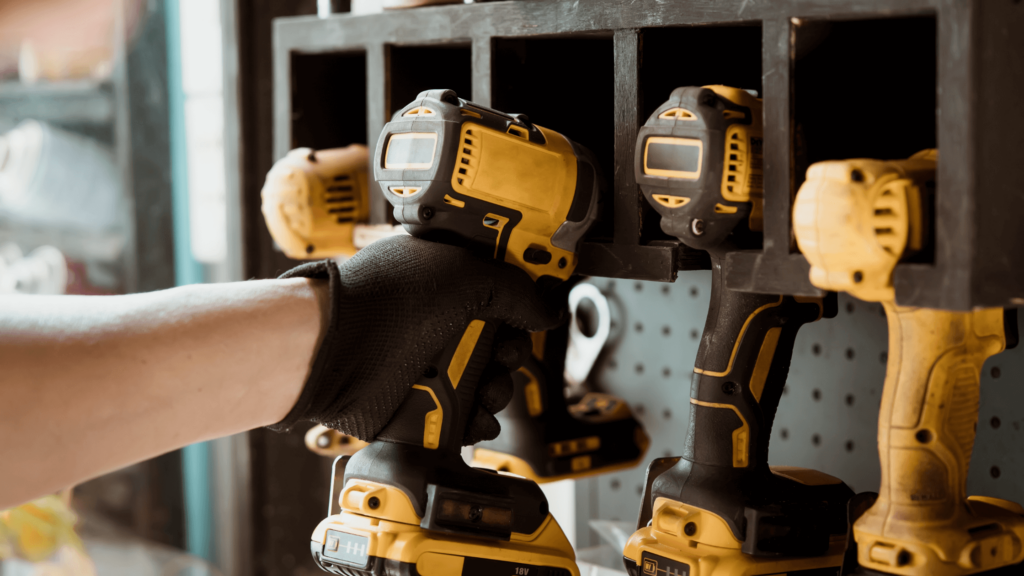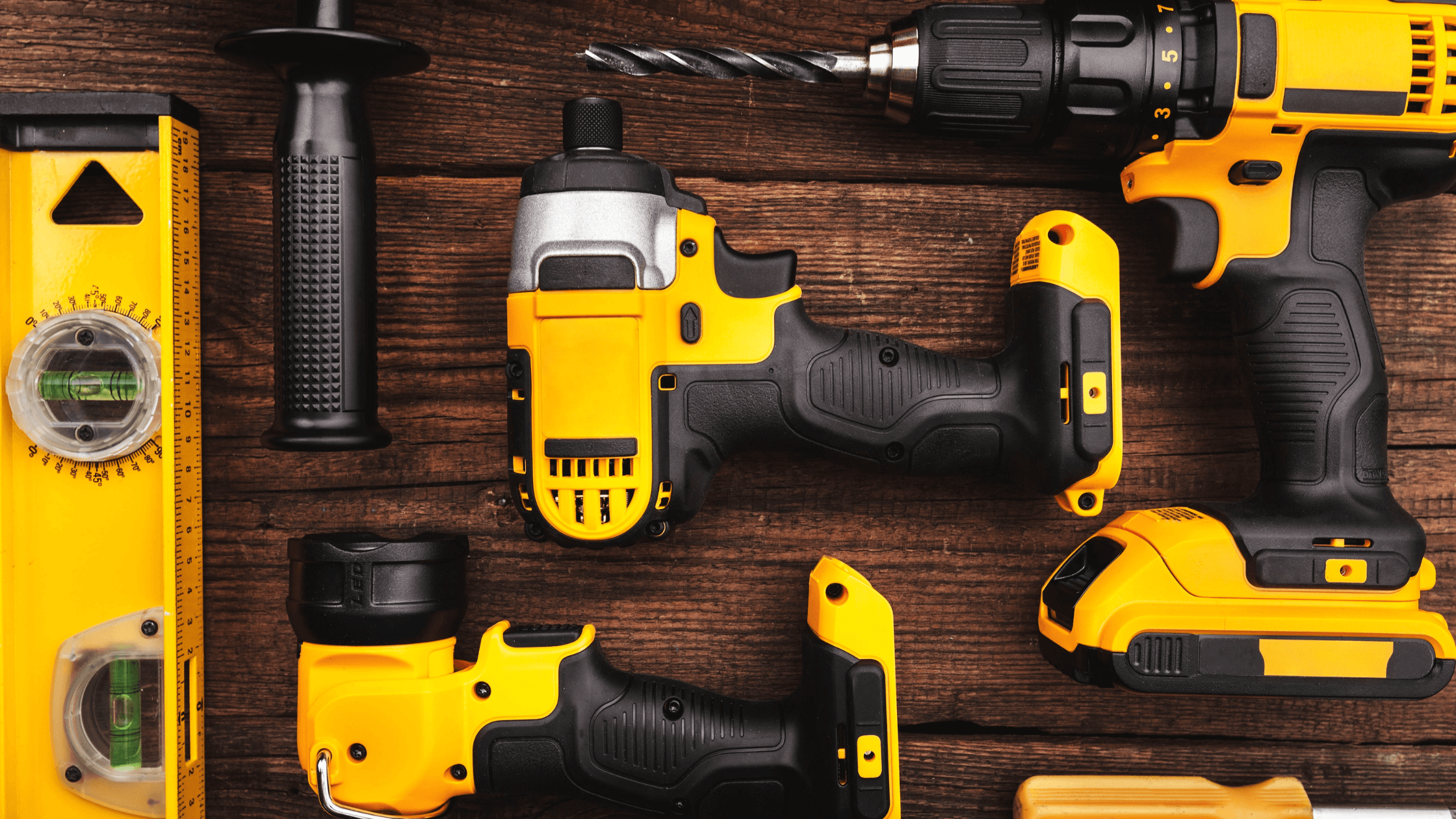Have you ever heard that corded power tools are always better than their battery-operated counterparts? Or maybe that older tools aren’t worth buying because their replacement parts are impossible to find. These are just a few examples of the many common tool myths floating around the construction space. Here are the most common myths, debunked, so you can feel reassured about your tool collection.
10 tool myths you might believe (but shouldn’t)

1. Myth: The higher the voltage, the better the tool
When tool brands advertise their products as having “high voltage,” customers often associate that with more power or higher output. That must mean those tools are most suited for the toughest jobs, right?
Truth: In reality, the motor, gearing, chuck, and other parts that produce the power in your tools have a far more significant impact on power and performance. The 20V or 18V stickers or signage you see are just there for brand identification, which isn’t a performance measure.
2. Myth: Electric tools trump pneumonic tools
Pneumonic tools, also known as air tools, cannot power projects like electric tools… or so people believe. This myth sparks a debate that never seems to have a clear answer.
Truth: There’s no “wrong or right” here. When it comes down to it, it’s just about preference. Air tools are typically more affordable and lighter than electronic tools. Both are great perks, but the tools do need to be hooked up to an air compressor to function. The more tools you have going at once, the larger the air compressor required for the job.
This drawback gives pneumonic tools a bad reputation for being inconvenient and “lesser” when, in fact, it depends on the type of work you do. Pneumonic tools are often preferred by those who have a single shop or are DIY auto mechanics.
3. Myth: Women need their own tools
For some reason, pockets of the population continue to believe that women in construction simply can’t use run-of-the-mill tool brands or need them in some way modified for use. This belief stems from the misogyny still very present in some of the trades today.
Truth: The truth, of course, is that women can use any tool and model that a man can use, as gender doesn’t impact your operating ability. While some tools may be easier to operate for specific body types, no amount of strength or size is optimal for all tasks. For example, someone who is 6’6” with 340 pounds of muscle might have an easier time busting up concrete with a spud bar, but that same man will have a more challenging time caulking a hard-to-reach crawlspace than a guy who is 5’5” and more built to handle fine details.
The takeaway is that tool brands are made for anyone to use.
4. Myth: Corded tools are better than battery-powered ones
There’s no way a battery-operated tool can match the power of a corded one, right? Battery-powered tools have a limited run time, and charging them takes time. That’s enough to crown corded tools as supreme.
Truth: This myth, like many others, comes down to preference. While it’s true that corded tools allow you to work uninterrupted, the cord also limits your range of motion, creates a workplace safety hazard, and limits use to areas with available outlets.
For many battery-powered tools, the power output provides a similar level of performance as their corded counterparts. Some brands are also making strides in charging speed and run time. However, battery-powered tools often come with a more considerable upfront cost, as batteries and chargers are generally sold separately.
5. Myth: Industrial tools are only for professionals
Industrial tools are made for industrial applications for a reason. Professionals should handle them, and their use at home wouldn’t be logical.
Truth: Many hobbyists, DIYers, homeowners, and new enthusiasts can use industrial tools. It depends on the project and your preference. Many power tools like power drills, sanders, and saws are easy to handle for beginners and available in versions for both novices and professionals.
6. Myth: Bigger tools mean faster performance
People often assume that the larger the tool, the more power and the faster you’ll get your project done.
Truth: The reality is that larger tools are often heavier and more challenging to handle. This means you work more slowly, often due to fatigue. This also means bigger tools can lead to more mistakes, causing a delay in project completion. It’s important to choose the right tool for the scope of the work, and often, that means a smaller tool with more precision and the right amount of power.
7. Myth: Tools are traded and sold because they have defects
Everyone wants to get junk tools off of their hands. Or that’s at least the line of thought that keeps this next myth alive.
Truth: The most common reason people resell tools is the need for change. The original user may have finished a one-off project. Maybe they’re pivoting hobbies. Maybe they thought they needed a tool when they were after something different. Sometimes, there’s nothing wrong with what they’re selling, but they choose a different model or brand due to preference or need instead. Before assuming the used tool you’re looking into is defective, inquire with the seller about the story behind the listing.
8. Myth: Your favorite brand is the best on the market
The battle of the brands is probably the biggest of the “my preference is superior to yours”- type myth. Brand loyalty is great. Maybe you like a particular brand because you associate it with a project that meant a lot to you. Or maybe you come from a long line of brand loyalty in your family. Often, if you believe that your favorite brand is superior to others, it stems from loyalty that does not make the brand objectively better. It’s a similar loyalty to those who enjoy sports—all passion with nothing concrete to back it up.
Truth: Every tool brand has pros and cons, and each user might have specific needs that make one brand more suitable. Often, users also can’t differentiate the quality. For example, one DIYer might say DeWALT tools are superior to Black & Decker, while another says Porter Cable is much better than DeWALT. In reality, both DeWALT and Porter Cable are owned by Black & Decker.
A tool brand should win you over based on what it offers, not the brand name on the box.
9. Myth: Older tools are too hard to find replacement parts for
Tools that are no longer sold in stores aren’t worth keeping around because finding replacement parts is next to impossible. You should routinely upgrade your toolbox with the latest and greatest to avoid going on a pointless hunt.
Truth: Replacement and remanufactured parts are easier to come across online than you think. Many tool websites have expansive sections for replacement parts, and some sellers are dedicated solely to selling remanufactured and replacement parts for tools. So hang onto your old faithful models because you could keep them around longer than you think.
10. Myth: Batteries for power tools have memory issues
Your power tool battery will eventually “remember” the low charge it was last left on and will repeatedly revert to that “memory loss” and continue to operate at that capacity. It’s an annoying but very real consideration when opting for battery-operated tools.
Truth: This myth stems from a long-ago truth. Older batteries made from nickel-cadmium (NiCd) would sometimes lose charge capacity if repeatedly only partially discharged before recharging. But with newer (than 10 years ago) models, that shouldn’t be the case, and if it does happen, it’s very rare. To ensure it won’t happen, don’t consistently drain your tools to the same level each time before putting them back on the charger. You can trust your battery-powered tool to deliver the charge performance it promises.
Like this content and want more like it? Subscribe to our weekly newsletter and follow us on social media for the latest news and tips for busy construction professionals.


